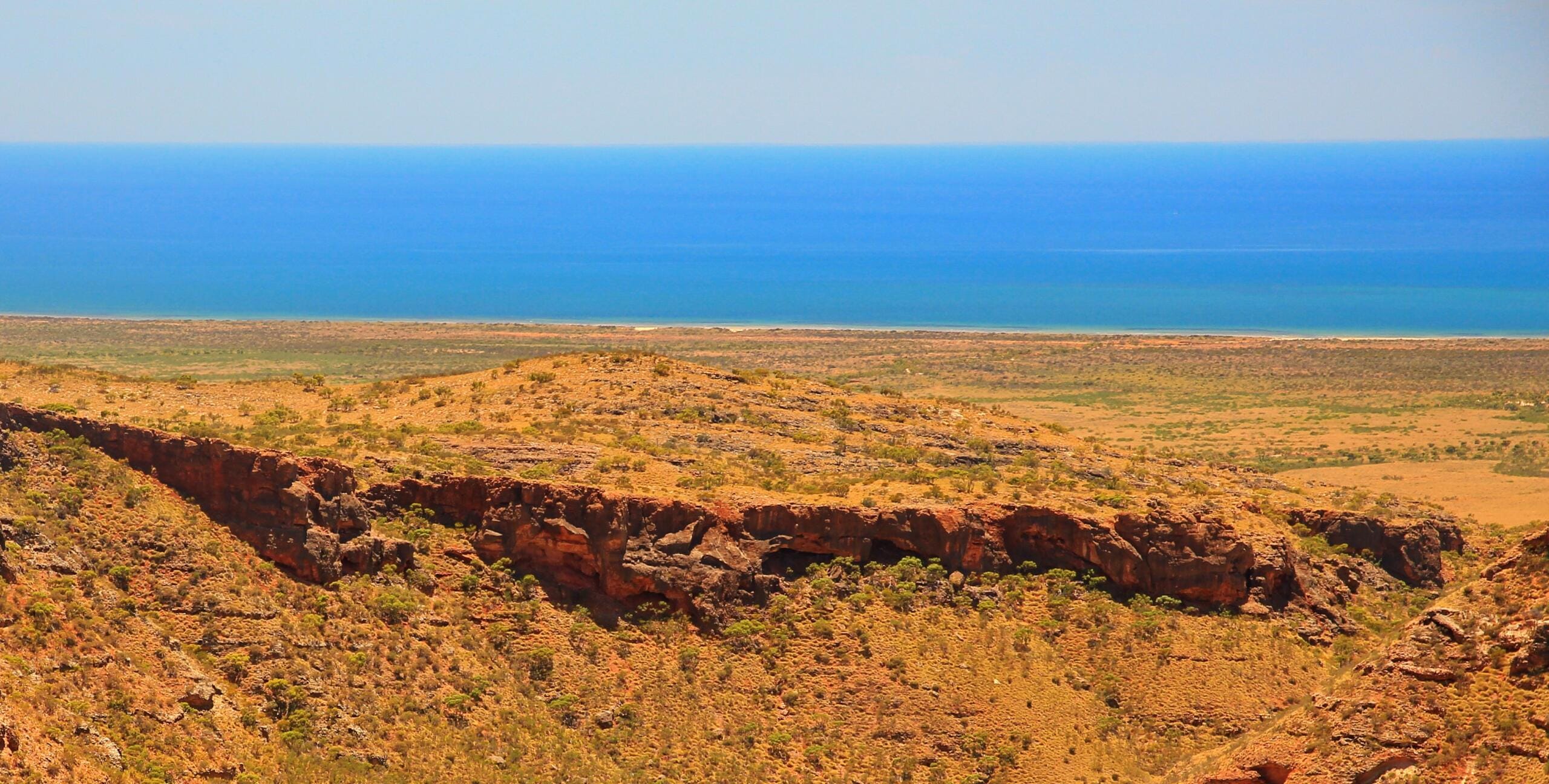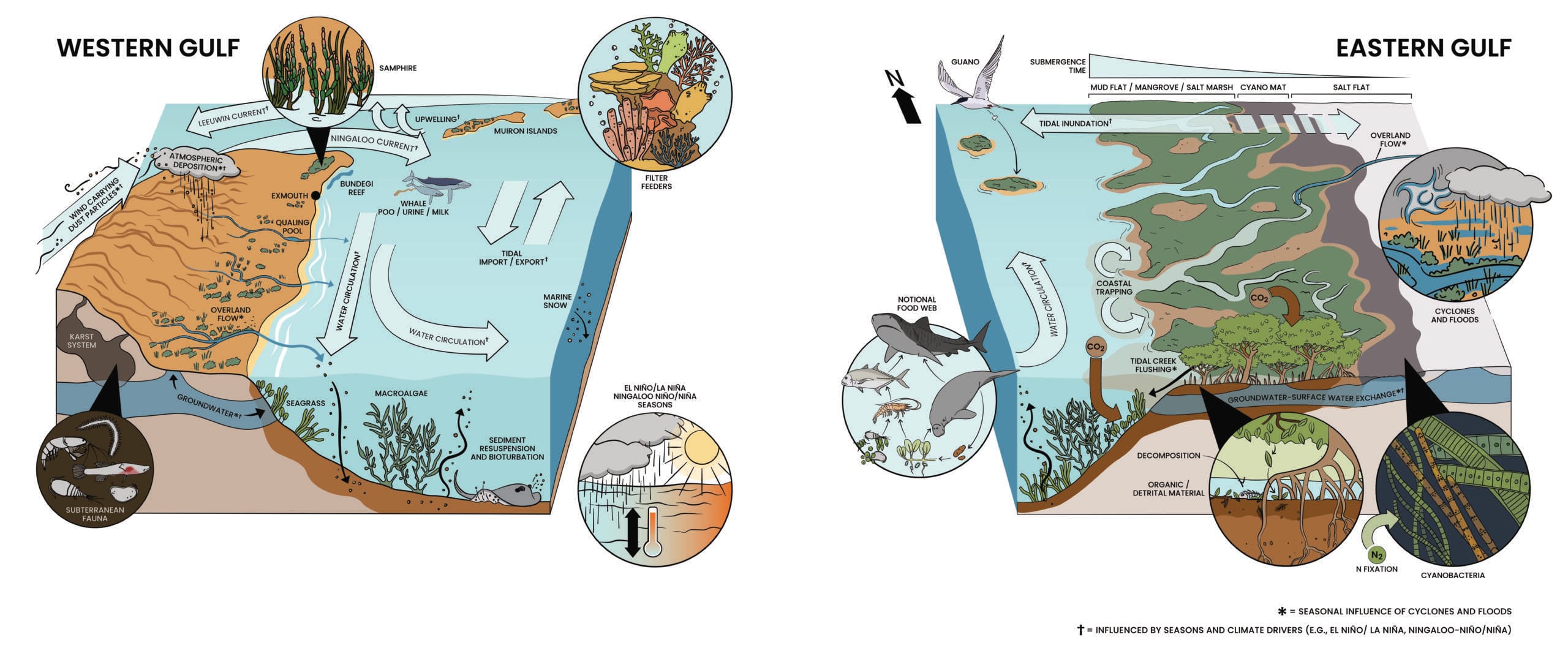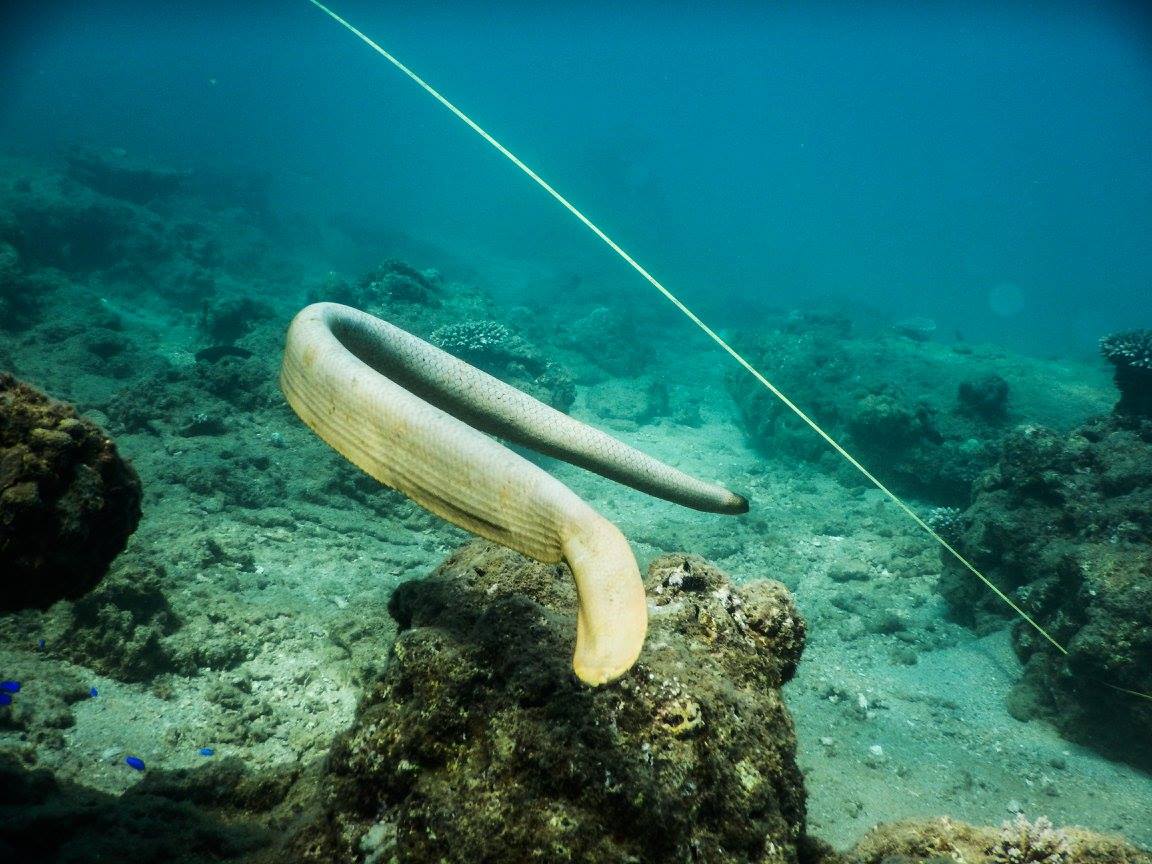A powerful force is stopping the Indian Ocean from cooling itself – spelling more danger for Ningaloo
February 24, 2025


Exmouth Gulf is recognised as an area of high ecological importance with incredible economic, cultural and community value for Western Australians.
It features diverse marine habitats, including, seagrass meadows, mangroves, coral reefs, and salt flats, and is also home to unique subterranean ecosystems linked to the Cape Range karst system.
Its marine environment is abundant with globally important marine life such as sawfish, sea snakes, dugongs, marine turtles, humpback whales and migratory birds.
WAMSI has played a key role in providing a synthesis of available knowledge as well as strategic, science-based information to support the understanding and management of Exmouth Gulf, ensuring decisions are informed by the best available research and collaborative expertise.
Commissioned by the Exmouth Gulf Taskforce through the Department of Water and Environmental Regulation, WAMSI has delivered a landmark report of existing scientific knowledge on the marine and coastal environments of the ecologically significant Exmouth Gulf.
This synthesis of Exmouth Gulf draws from 500 studies, spanning decades of published scientific literature alongside the latest information from scientists currently working in the region. Importantly, the Knowledge Review of Exmouth Gulf and prioritisation of future research also integrates traditional, cultural and local knowledge, painting a clearer picture of the area.
The report highlights the growing impact of climate change and human activities on Exmouth Gulf’s ecosystems, brings forward new knowledge on the importance of intertidal habitats along the eastern Gulf, and offers critical environmental considerations for coral reef conservation. A major outcome of the review is the identification of 34 knowledge gaps, organised under nine high-level research themes. These range from the impacts of industrial development and climate change to the effects of fishing, boating, and tourism.
The Knowledge Review calls for targeted and collaborative research projects, including biogeochemical modelling and species-specific studies, as well as long-term monitoring programs to track environmental change. It provides an opportunity to align research, policy and community values in protecting Exmouth Gulf’s unique ecosystems into the future.
These documents are currently awaiting release.
No cards available.

Exmouth Gulf receives nutrients from both land-based and marine sources and these conceptual models show the possible nutrient sources and transport pathways in the Gulf, as well as the connectivity between land and sea, and between Exmouth Gulf and surrounding marine environments. (Ooid Scientific)
With increasing pressure from uncoordinated human activities and development, the Western Australian Environmental Protection Authority partnered with WAMSI to provide strategic advice under Section 16(e) of the Environmental Protection Act 1986 on the potential cumulative pressures of these activities on Exmouth Gulf’s environment.
WAMSI Research Director Dr Jenny Shaw, led a stakeholder engagement process involving scientists, government representatives, conservation groups and industry, as well as the Nganhurra Thanardi Garrbu Aboriginal Corporation to assess the risks of multiple environmental pressures on the region’s distinctive values relating to sea, land, air, water and people.
This information was provided to the EPA which used it to develop advice to the Minister of Environment. The EPA advice recommended a high level of protection for the eastern and southern portion of the Gulf and adjacent hinterland, and that future activities and development are compatible with the protection of the key values of Exmouth Gulf. This advice resulted in the Minister for Environment’s announcement of a new marine park to be established at Exmouth Gulf to help preserve the region’s unique environmental and cultural values.
The new marine park will provide a high level of protection for the eastern and southern portions of the Gulf, and Class A reserves for the protection of local areas of significance such as Qualing Pool, Camerons Cave and the islands of the Gulf.

Metadata from the Cumulative Pressures on the Distinctive Values of Exmouth Gulf report is available on the AODN website which provides access to all available Australian marine and climate science data.


